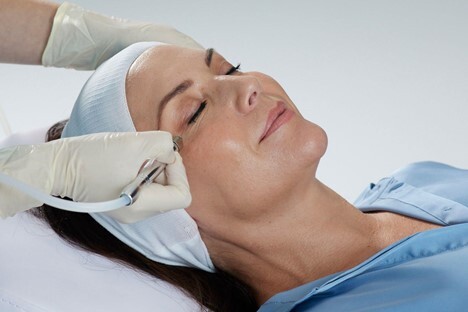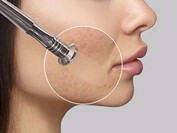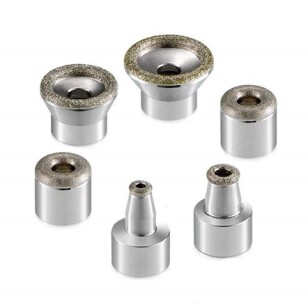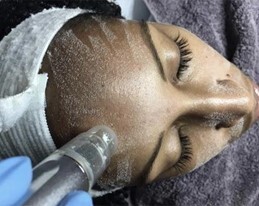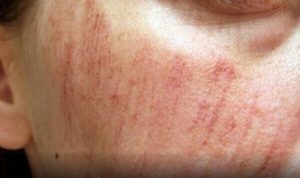Microdermabrasion is a minimally invasive procedure used to renew overall skin tone and texture. It can improve the appearance of sun damage, wrinkles, fine lines, age spots, acne scarring, melasma, and other skin-related conditions.
The procedure uses a special applicator with an abrasive surface to gently sand away the thick outer layer of the skin to rejuvenate it.
A different microdermabrasion technique sprays fine particles of aluminum oxide with a suction to accomplish the same outcome as using the abrasive surface.
Microdermabrasion is considered a safe procedure for most skin types and colors. People might choose to get the procedure if they have the following skin concerns:
● fine lines and wrinkles
● hyperpigmentation, age spots and brown spots
● enlarged pores and blackheads
● acne and acne scars
● stretch marks
● dull-looking skin complexion
● uneven skin tone and texture
● melasma
● sun damage
Preparing for microdermabrasion
Microdermabrasion is a nonsurgical, minimally invasive procedure. There’s very little you need to do to prepare for it.
It’s good idea to discuss your skin concerns with a skin care professional to find out if microdermabrasion is the right fit for you. Discuss any past cosmetic procedures and surgeries, as well as allergies and medical conditions.
You may be told to avoid sun exposure, tanning creams, and waxing for about a week before treatment. You may also be advised to stop using exfoliating creams and masks approximately 3 days prior to treatment.
Remove any makeup and cleanse your face before the procedure begins.
Microdermabrasion is an in-office procedure that usually takes about 30 minutes. It’s typically performed by a dermatologist.
It’s not necessary to use anesthesia or a numbing agent for microdermabrasion.
Your provider will use a handheld device to gently spray on the particles or sand away the outer layer of skin in the targeted areas. At the end of the treatment, a moisturizer as well as sunscreen will be applied to your skin.
There are a few different ways to do the procedure, based on the specific device used:
1.Diamond-tip handpiece
A diamond-tip handpiece is designed to gently exfoliate dead cells in your skin. At the same time, it will suction them off immediately.
The depth of the abrasion may be affected by the pressure applied on the handpiece as well as how long the suction is allowed to remain on the skin. This type of microdermabrasion applicator is generally used in more sensitive facial areas, like close to the eyes.
2.Crystal microdermabrasion
Crystal microdermabrasion uses a crystal-emitting handpiece to gently spray on fine crystals to rub away outer layers of the skin. Like the diamond-tip handpiece, dead skin cells are suctioned off right away.
The different types of crystals that may be used include aluminum oxide and sodium bicarbonate.
Side effects of microdermabrasion
Common side effects of microdermabrasion include mild tenderness, swelling, and redness. These generally go away within a few hours after treatment.
You might be advised to use a moisturizer to minimize dry and flaky skin. Minor bruising may also occur. This is mostly caused by the suction process during the treatment.
What to expect after microdermabrasion
There is little to no downtime after microdermabrasion. You should be able to resume your daily activities immediately.
Keep your skin hydrated and use gentle skin care products. Avoid using topical acne medications for at least 1 day after treatment. It’s extremely important to protect your skin with sunscreen. Your skin can be more sensitive to the sun in the few weeks after the treatment.
You can expect to see noticeable results immediately after the procedure. The number of microdermabrasion sessions needed will depend on the severity of your skin concerns as well as your expectations.
Your provider will likely design a plan for the initial number of sessions, as well as periodic maintenance treatments.
What does a microdermabrasion do?
Microdermabrasion treatments use a minimally abrasive instrument to gently sand your skin, removing the thicker, uneven outer layer, and has many benefits. This type of skin rejuvenation is used to treat light scarring, discoloration, sun damage and stretch marks.
What are 5 disadvantages of microdermabrasion?
skin swelling
skin redness, similar to sunburn
bruising
a burning or stinging sensation
increased sensitivity of the skin to sunlight
How long do microdermabrasion results last?
The effects of the treatment typically last for about 1 month. The length of time results will last varies depending on your age and how well you are responding to the treatment, but for most patients, it is common to schedule regular appointments every 4 weeks.
Can you see results after 1 microdermabrasion?
You will begin to see some changes in your skin immediately after the first treatment session. Your skin will be more vibrant and have a youthful glow right away. This effect will get more pronounced in the first 24 hours after treatment as your skin calms from the therapy and the renewed skin becomes more visible.
Who should avoid Microdermabrasion?
Microdermabrasion is not recommended for people who have deep scars, active keloids, undiagnosed lesions, a recent herpes outbreak, warts on the face, skin cancer, active acne (stages 3 & 4), sunburns or active rosacea, eczema, an autoimmune system disorder, or unstable diabetes.
How many layers does microdermabrasion remove?
During microdermabrasion, fine crystals usually remove the superficial or uppermost layer of the epidermis, known as the stratum corneum. Depending on the extent of skin damage, deeper treatment may be necessary; however, treatment rarely extends beyond the epidermis.
How many sessions are needed for microdermabrasion?
On average, it takes between 6-12 sessions for a person to see drastic results from microdermabrasion. Some people need to get these treatments every single week for their first 3 sessions.
Why does my skin look worse after microdermabrasion?
It may appear that microdermabrasion has made your skin worse in the treated area to begin with as your skin adjusts to the changes. Microdermabrasion can sometimes cause breakouts as the bacteria and dirt is drawn from your skin to leave you with brighter, younger looking skin.
What age is microdermabrasion good for?
Microdermabrasion is great for all ages. From 12 years old on, microdermabrasion is a great way to treat skin. Keep in mind that skin older than 70 years, may be more sensitive and is more prone to bruising.
Does microdermabrasion tighten skin?
While microdermabrasion can help reduce the appearance of fine lines and wrinkles, as well as age spots, it can't tighten sagging skin or treat deep wrinkles. Those issues are in the domain of facial cosmetic surgery treatment.
Does microdermabrasion help dark spots?
Does microdermabrasion make you look younger?
Microdermabrasion is a popular exfoliation treatment that gently resurfaces the skin. While it can improve the appearance of fine lines and age spots, it can't treat deep wrinkles or sagging skin. If you're after nonsurgical approaches to combat aging, injectables such as Botox and dermal fillers are excellent options.
Is microdermabrasion good for aging skin?
Microdermabrasion softens fine lines and wrinkles by removing the damaged, outer layer of older skin. Microdermabrasion removes the rough, damaged outer layer of the facial skin. The process reveals a clean and glowing new layer that doesn't show the severity of your previous fine lines and wrinkles.

